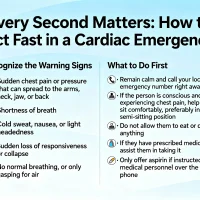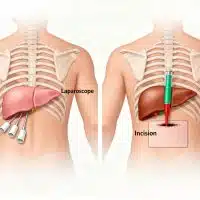
What is DVT (Deep Vein Thrombosis) ? — Deep vein thrombosis, or DVT for short, is a medical condition in which blood clots form in one or more deep veins. DVTs are commonly formed in the thigh or calf. However, it may also occur in different parts of the body. This article explains everything you need to know about DVT (deep vein thrombosis), including the causes, risk factors, symptoms, and diagnosis methods.
Deep vein blood clots
A blood clot occurs when blood changes from its liquid form into a slightly liquid gel through a process known as coagulation. When a person’s outer skin is injured, the blood clot is useful to stop the bleeding. However, unlike normal blood clots, DVT occurs inside the deep vein, which results in a blocked blood flow.
So, what causes DVT? In general, deep vein thrombosis is caused by any disease or condition that prevents blood from flowing or clotting normally. Three factors have been identified that may cause DVT, namely:
- Vein damage, including damage to the valves of the veins (chronic venous insufficiency)
- Impaired blood flow of the veins
- Blood conditions that cause blood to clot easily (hypercoagulability)
Risk factors of DVT (deep vein thrombosis)
In BIMC Kuta Hospital, DVT is one of the most common health problems experienced by patients. Despite being fairly common, several risk factors cause DVT to be more likely to occur in a person. Some of these risk factors may include medical conditions, genetic disorders, histories of surgery, and many more. So, here are some risk factors for DVT.
- Having a genetic disorder that causes the blood to clot more easily. These disorders may include, Factor V Leiden, nephrotic syndrome, and antiphospholipid syndrome.
- Using a transportation method, such as planes or trains, severely reduce leg movement.
- Undergoing bed rest, being paralyzed, or suffering from a disease that keeps the legs from moving for a long period.
- Suffering from a heart attack, heart failure, cancer, colitis, or severe obesity.
- Having a history of vein-related surgery, such as heart surgery, abdominal surgery, or knee and hip replacement surgery.
- Having a history of lower-body injuries, such as a fractured femur, leg injury, or pelvis injury.
- Suffering from diseases that interfere with the blood vessels’ functions, such as vasculitis and varicose veins.
- Experiencing the increased levels of estrogen. This commonly occurs in women who were pregnant, recently giving birth, taking birth control pills, or taking estrogen hormone replacement medications.
- Having a history of DVT, either in yourself or within your family.
- Using injected drugs.
- Taking chemotherapy.
- Having a severe smoking habit.
- Being over 60 years old.
Symptoms of DVT (Deep Vein Thrombosis)
Contrary to popular beliefs, DVT commonly occurs with no symptoms. However, some patients commonly report several symptoms such as warmth in the limbs, pain when bending the leg, calf swelling, night cramps, and changes in the color of the legs. However, it is important to perform a self-diagnosis when some of those symptoms occur.
In addition to those symptoms, you may also experience other more severe symptoms caused by DVT. Also known as pulmonary embolism, this disease occurs when the blood clot travels to the blood vessels in the lungs. Patients may experience symptoms, such as bleeding coughs, fast pulse, shortness of breath, chest pain, dizziness, and feeling like passing out. If those symptoms occur, immediately go to the nearest BIMC Kuta Hospital for proper medical care.
Diagnosing DVT
During a doctor’s visit, patients will usually be asked about their symptoms. In addition, the doctor will also perform a physical examination of the area of the body that experiences the symptoms. To confirm the diagnosis, the doctor will also perform a series of supporting tests. These tests may include:
- Blood tests
- Doppler ultrasound
- Venography
- CT scan or MRI
Treating DVT
Treatment for DVT aims to prevent the blood clots from getting bigger, prevent pulmonary embolism, and reduce the risk of DVT recurrence. Some of the most common DVT treatments include:
Medications
Patients will be given some anticoagulant medicine, such as rivaroxaban, apixaban, parnaparin, dabigatran, and fondaparinux. Those medicines aim to prevent the blood clots from growing and reduce the risk of new blood clots forming.
Vena Cava Filter
Besides medications, patients with severe DVT will also receive a vena cava filter, which is a small filter placed in the main abdominal vein. This filter is used to reduce the risk of blood clots entering the lungs.
Compression Stockings
Typically worn above the knee, patients will be advised to wear compression stockings to reduce the risk of new blood clots forming. Patients will typically be advised to put on compression stockings for at least two years.
Thrombectomy
Thrombectomy is done by making a small incision in the blood vessel, allowing the doctor to remove the blood clot. Once the clot has been removed, the doctor will repair the damaged tissue and blood vessels.
So, those are everything you need to know about DVT (deep vein thrombosis). If you experience the symptoms of DVT, go to BIMC Kuta Hospital for proper treatment.











